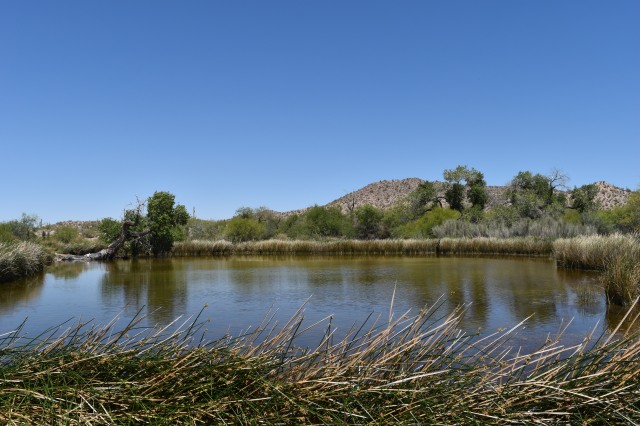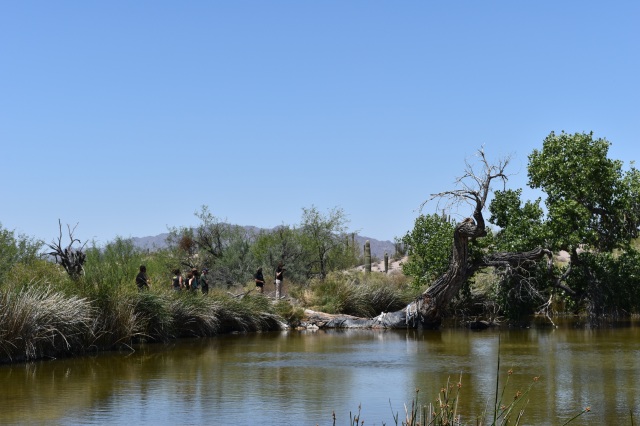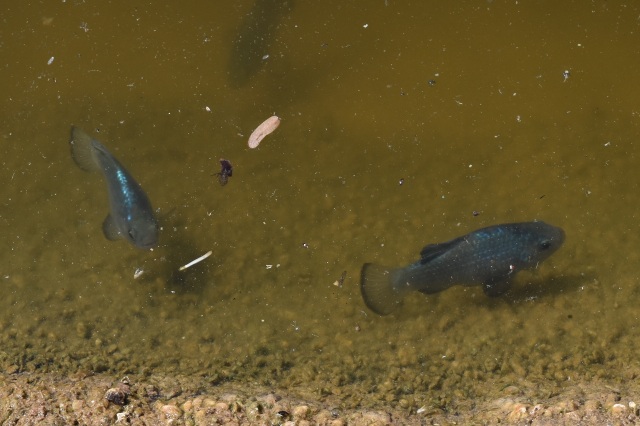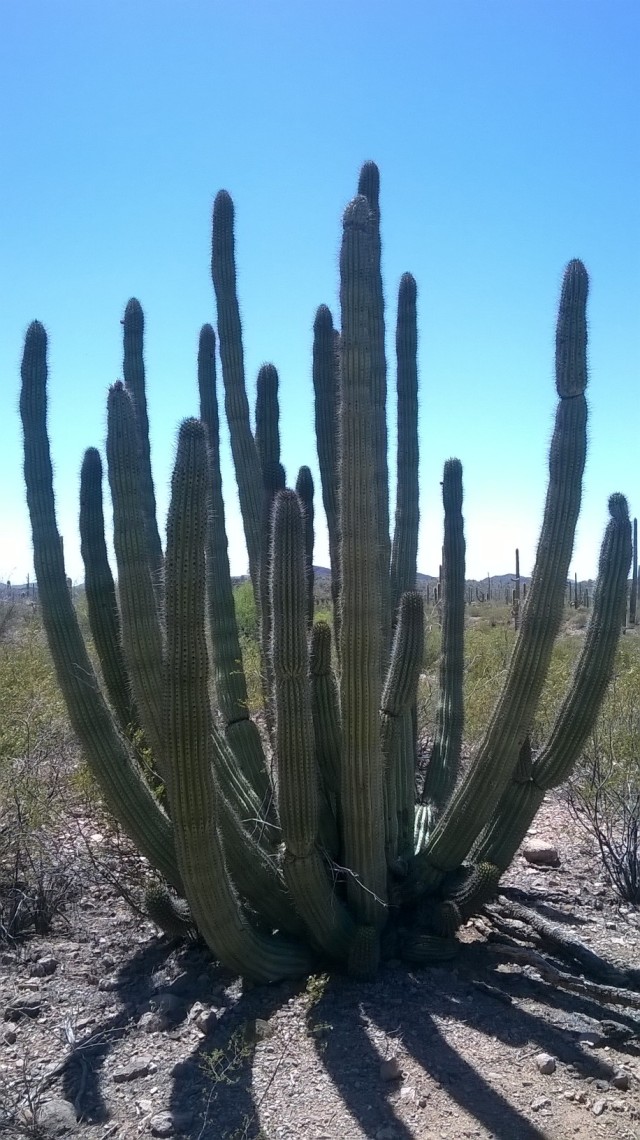Organ Pipe Cactus National Monument is located in southwestern Arizona in the heart of the Sonoran Desert. The national monument is bisected by the southernmost portion of State Route 85 which ends at the U.S.-Mexico border; in fact, the 31-mile southern boundary of the national monument is the border. The Kris Eggle Visitor Center is located approximately 25 miles south of Why, Arizona and approximately 36 miles south of Ajo, Arizona on Highway 85.
There are many reasons to visit Organ Pipe Cactus National Monument some of which include the opportunity to see an organ pipe cactus since the monument was established in 1937 to protect the species’ northernmost habitat in the United States. Organ pipe cacti are more common in southern regions across the border where they are less prone to frost. The national monument protects 516 square miles of Sonoran Desert habitat – over 95% is designated as wilderness.
A wilderness designation refers to the highest level of protection federal lands are eligible for, and only Congress can designate wilderness areas within existing public lands. Organ Pipe Cactus National Monument is administered by the National Park Service. The National Park Service is celebrating its Centennial in 2016, so go ‘Find Your Park’ (#FINDYOURPARK) for more information about Centennial celebrations. Organ Pipe Cactus National Monument is also a Biosphere Reserve. Biosphere Reserves are non-regulatory protected areas that differ from other national designations and are part of a world network of biosphere reserves under the umbrella of UNESCO’s Man and the Biosphere Program.
Organ Pipe Cactus National Monument is home to endangered species such as the Sonoran pronghorn and the Quitobaquito pupfish year round and seasonally to the Lesser long-nosed bat which migrates to the Sonoran desert in the spring from central Mexico to give birth to their young and to feed on the nectar and fruit of the organ pipe cactus and saguaros. Visitors can enjoy the abundant wildlife, the unpolluted night sky, drive on scenic roads, hike desert trails, camp, or just stop by the visitor’s center for an introduction to the monument.
Of course as with most things in life, the monument’s existence has not been a fairytale, being on the US-Mexico border has led to unique circumstances that affect the entire border region not just the monument. The US-Mexico border region is an area where the supply and demand of illegal drugs and cheap labor is the most evident, and ever since an intense crack-down on smuggling at border cities and towns occurred in the 1990’s a lot of the illegal activities shifted to unpopulated, rugged country such as the national monument.
In 2002, Kris Eggle, a law enforcement park ranger was killed on duty by a drug trafficker. After the park ranger’s death, a vehicle barrier was constructed along the border and most of the land was closed to the public until 2014 when public access to the entire national monument was reinstated.
One of the areas previously off-limits to the public was Quitobaquito Pond due to its proximity to the border – only a few meters from the fence. Quitobaquito is a special place not only for its ecological significance but because of its cultural significance as well. Artifacts dating back 16,000 years have been found in the area. Quitobaquito is associated with a prehistoric trade route known as the Old Salt Trail in which the ancient inhabitants of the land traded salt, obsidian, and seashells. Quitobaquito Springs later became the home of the Hia C-ed O’odham and the Tohono O’odham. Currently, the eastern boundary of Organ Pipe Cactus National Monument coincides with the southwestern boundary of the Tohono O’odham Nation.


The ecological significance of Quitobaquito cannot be overstated. Quitobaquito is the only natural place where the endangered Quitobaquito pupfish (Cyprinodon eremus) can be found in the U.S., and it is the only place in the U.S. where the Sonoyta mud turtle and the tiny Quitobaquito springsnail can be found. Quitobaquito pupfish can also be found in a handful of artificial refuge ponds in Arizona and Sonora.

I had visited Organ Pipe Cactus National Monument before, but it wasn’t until my most recent visit in the spring that I got to see Quitobaquito and many other areas that I probably would not have visited had it not been for the fortunate opportunity I had to help out on a wildlife camera deployment project led by the Sonoran Desert Monitoring Network. Deploying wildlife cameras means hiking off-trail to remote areas that are not generally frequented by the general public, so there is a sense of being out in the ‘wilderness’; a conflicted wilderness, but a wilderness nonetheless.
The Border Patrol’s presence has increased over the years and more agents with more vehicles led to a lot of illegal roads within the wilderness area, before the installation of the vehicle barrier, drug traffickers also created illegal roads. Off-road driving inevitably leads to habitat fragmentation; fortunately, the Department of Homeland Security funded a road restoration project recently at Organ Pipe Cactus National Monument and at adjacent Cabeza Prieta National Wildlife Refuge; thus far, miles and miles of roads have been restored.

From a bird’s eye view the landscape looks unspoiled, but in certain ‘high traffic’ areas you do encounter trash left behind by border crossers and ATV tracks left behind by law enforcement. A common item that litters the landscape and can be found anywhere along the border not just at the national monument is the iconic black water jug – a plastic item – that represents the difference between life and death in a hostile environment. I want to clarify that even though we hiked many miles the area we covered represents only a tiny fraction of the land and we also encountered many places where the landscape appeared pristine.
Non-profit organizations such as Human Borders services and maintains emergency water stations throughout the Sonoran desert border region in an effort to prevent migrant deaths – according to some reports since 2001 over 2,000 people have died attempting to cross the Arizona-Mexico border as a result of dehydration, sunstroke, and exposure. The Border Patrol also rescues people throughout the region. Emergency assistance towers next to roads where people can pick up the phone and request assistance can be seen from a great distance.
A few days are not enough to explore the many corners of the monument, and there are still many corners I want to explore especially in the mountains. I encourage people to visit Organ Pipe Cactus National Monument and other natural protected areas along the border so they can see for themselves what it is like and to learn about the many wildlife and cultural treasures along the border, but remember if you go, always go prepared with more water than you think you need and always be cautious of your surroundings. Organ Pipe Cactus National Monument is a truly special place, so if you’re ever in the area don’t hesitate to visit – it is worth it.

For more information about Organ Pipe Cactus National Monument go to:
http://www.nps.gov/orpi/index.htm
















